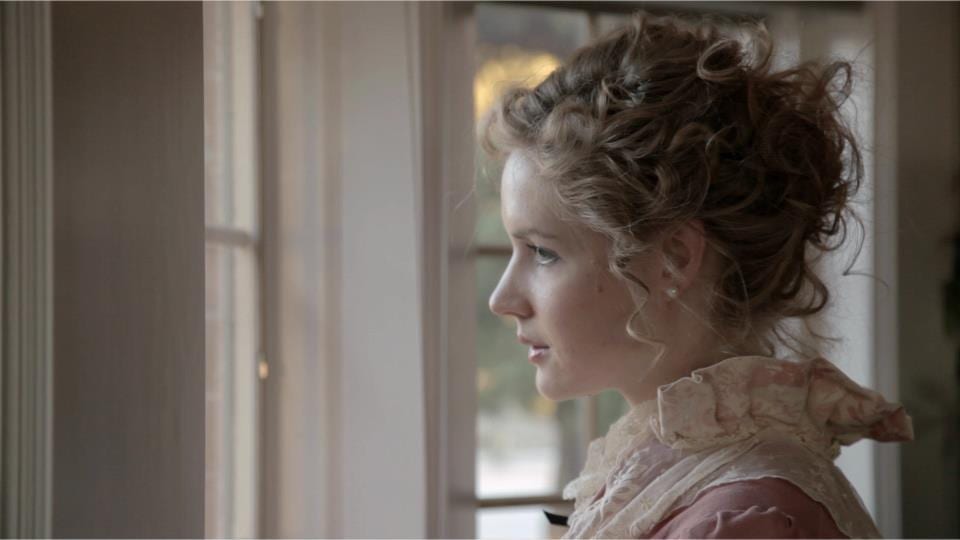 SALT LAKE CITY — There’s something to be said for daring theater. Zion Theatre Company’s latest venture, Rings of the Tree, is definitely daring—in subject matter, execution, technical effects, and a shocking and potentially controversial resolution. Unfortunately, this daring show has a few kinks to work out before it can be sincerely hailed for its courage.
SALT LAKE CITY — There’s something to be said for daring theater. Zion Theatre Company’s latest venture, Rings of the Tree, is definitely daring—in subject matter, execution, technical effects, and a shocking and potentially controversial resolution. Unfortunately, this daring show has a few kinks to work out before it can be sincerely hailed for its courage.
In Rings of the Tree by Mahonri Stewart, wealthy Diana Applesong has created a home for herself cut off from the modern world. Her estate has no electricity, certainly no technology, and no news of current events. She keeps a few servants, insists everyone dress as if it is 1800’s England, and only allows two outsiders—a mysterious man named Colin and his daughter Echo—to visit her. Her world is shaken when she catches one of her servants sneaking three friends onto the estate. They soon learn much more about Diana and her life than they could have imagined. Dark secrets, deep desires, and careful manipulations fill this dramatic play.
But I can’t call this simply a “play.” It was much more than that. Around half of the action didn’t happen live onstage, actually. Where, then, you ask? No; this wasn’t an ancient Greek production where all the action happens offstage and is relayed to the audience by a chorus. Rather, many scenes had been previously filmed and were projected onto screens placed strategically around the stage, so we still got to see the action. I’d never seen anything like it. In this respect, the play was, as I said, extremely daring. It was actually advertised as a “multimedia play.” Many scenes were introduced by film sequences (the same actors played onstage and on film) and then continued when actors stepped onto the stage. Other times the projections took the place of scenery, creating the look of ornate walls, expensive furniture, or carefully manicured gardens. Sometimes filmed scenes and onstage action happened in combination, or the film highlighted or complemented some action that was going on live. The synchronization needed some polishing for it to really work and be less distracting, though. When both projection and stage action happened, stage lighting faded the projections so that instead of the gorgeous scenery or detailed film work, the audience only saw white screens, an awkward backdrop in many scenes. Even so, it was a brilliant convention and I would like to see it done again–only with as much care and detail taken in the live action as was in the filming.
Standout performances go to Jaclyn Hales as Diana Applesong and Lawrence Fernandez as Colin. Fernandez was calculating and fascinating, but Hales was the highlight of the evening. She was by far the most focused and experienced actor on the stage, and brought a depth and honesty to her character that would have been extremely difficult for a less adept actor. Anna-Marie Johnson‘s costume design wonderfully personified each character and their situation. I especially loved Diana’s costumes—how they began stiff and conservative but became looser and more flowing as the play progressed.
Most of the show’s problems came from the script and from the technical complexity. The sound design needed a complete overhaul; there was constant feedback from the sound system as it needed to be on through the whole show for the film sequences, and it not only hummed annoyingly and inappropriately in the background of every scene (the main character explicitly forbade electricity, after all), but also made it difficult to hear many of the actors.
While the plot was interesting, unconventional, unpredictable, and definitely trending right now, it was ripe with problems—easily fixed problems, I’m sure, but problems nonetheless. It took most of the first act to figure out what was going on in the play, and I only make this claim because I continually heard people whisper, “What’s going on?” An overarching conflict was difficult to understand throughout the whole piece, but particularly in act one. The playwright might consider tightening up the complex dialogue and allowing the audience to catch up with the action.
The play was written in short scenes with quick transitions, and really would have been better suited as a film. It was an interesting premise with potentially fascinating characters, but the slow transitions and wordy dialogue just wasn’t suited for a play. Transitions were sloppy. I’ve said time and time again that transitions make or break a show. In this case, it was just one more straw on a very weak camel’s back. On the other hand, the film sequences, directed by K. Danor Gerald, had great pacing and quality acting; it was when the actors stepped onstage that the problems began. The playwright won the Screenplay Writing Competition at the LDS Film Festival for the screenplay version of this play, and I believe it. Where the play had problems, a film would have strengths.
This show isn’t one I’d recommend to casual theater-goers. It’s innovative and bold, and isn’t something that will fit everyone’s taste. I’d definitely recommend it to those who appreciate a show that experiments and takes risks. This show is full to the brim with risks, and I commend the actors and production team for taking on a chance on a truly daring show.
[box type=”shadow”]The Zion Theatre Company production of Rings of the Tree plays February 9, 10, and 13 at 7:30 PM at the Grove Theatre (20 S. Main Street, Pleasant Grove). Tickets are $10-12. For more information, visit ziontheatrecompany.com.[/box]

